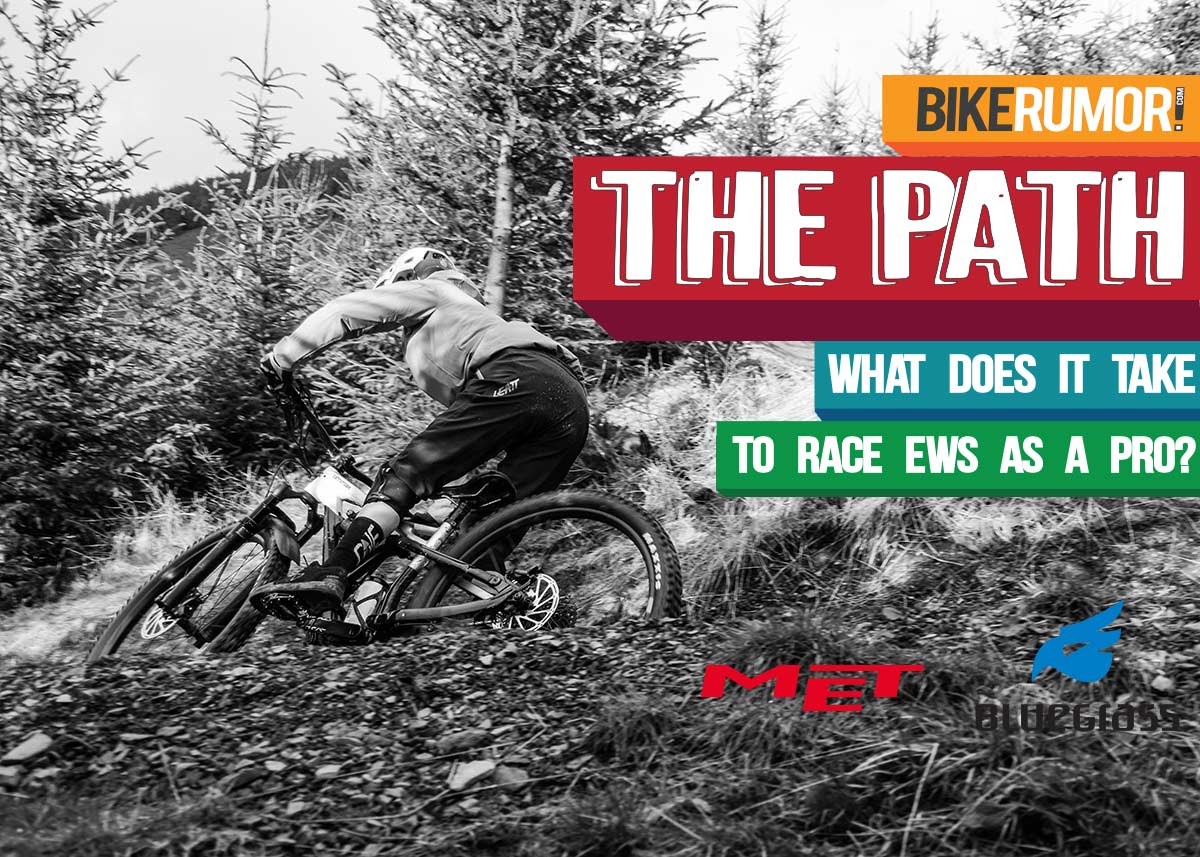Welcome back to The Path; the story of Jessie-May Morgan’s journey from Weekend Warrior to EWS Athlete, covering qualification, enduro training, race prep and more! Last time, Jessie-May told us how to qualify for the Enduro World Series, detailing how her results at 2019 EWS Qualifier Events and a European Enduro Series round in her hometown, Innerleithen, earned her a slot in the 2020 elite ranks.
The EWS have recently announced the good news that 2020 EWS Qualifiers have been given the green light. If you’re keen to get qualified yourself, head over to the EWS website for a complete list of Qualifiers set to go ahead this season. Remember to get an EWS membership before racing, or your hard earned podium places will secure you zero qualification points!
Now, it’s time to get fast…
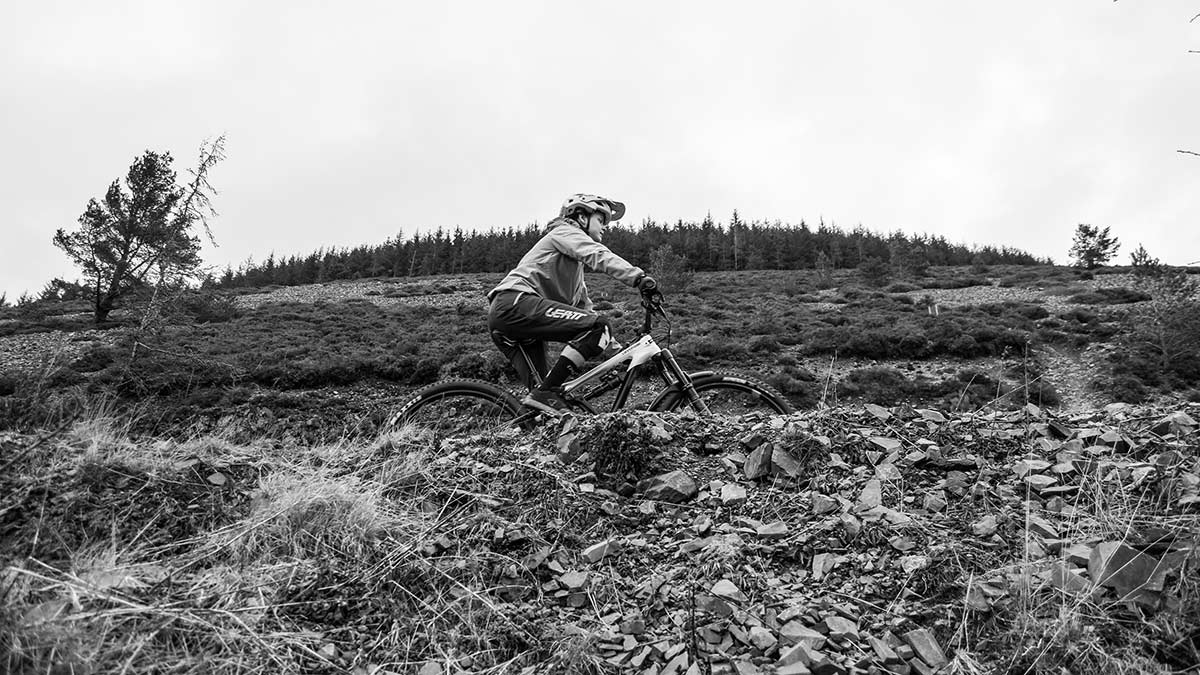
In this installation of The Path, Jessie-May gives us an insight into her training programme. This is not just any mountain bike training program. This is designed and overseen by Professor Geraint Florida-James, coach to Katy Winton and Lewis Buchanan, two Scottish racers well used to being at the pointy end of the sport.
So, what is a good enduro race training program? How does a pro Enduro Racer train to win? I was just as curious as you are, so it was time to…
Get a coach
Knowing myself well, I knew there’d be no way I could stick to a training plan I designed myself. For a start, I wouldn’t know how to structure one, or what to include, or how much rest to factor in, etc., etc. I was clueless.
That said, there is a ton of information out there on how to train for racing. You could trawl through swathes of it on the internet, picking and choosing the bits you liked, ignoring the bits you didn’t like, and come up with a training plan of some description. But you’d never really know if it was right for you.
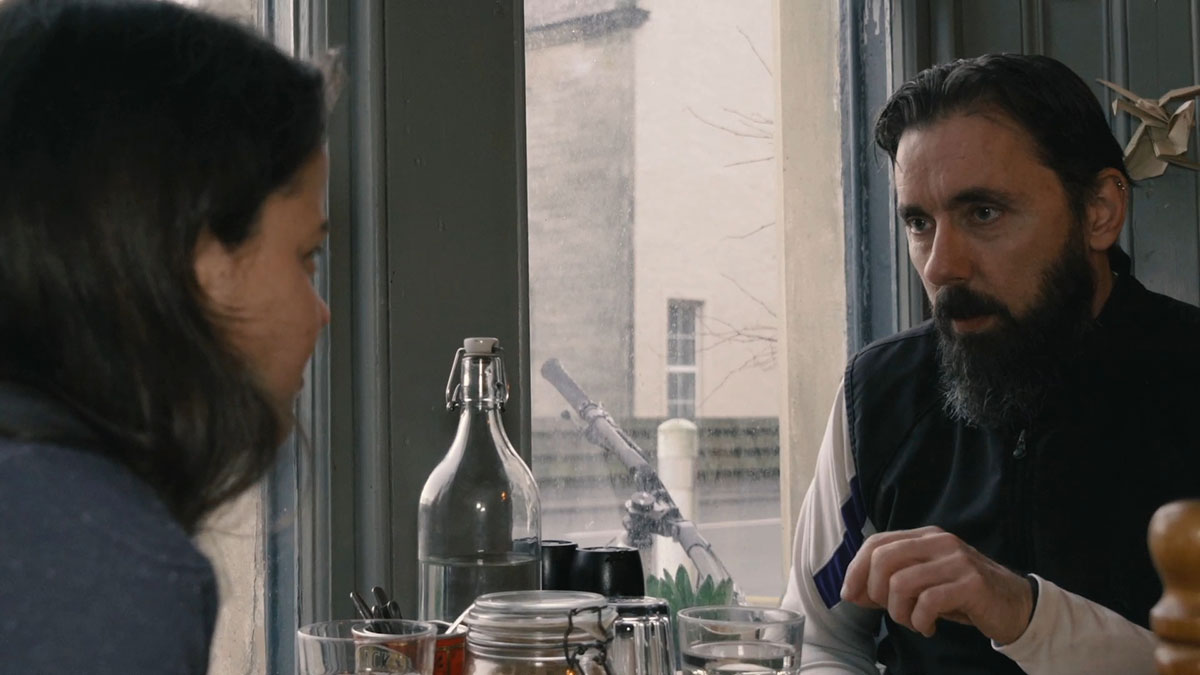
You’d be far better off getting your training plan from someone who actually knows what they’re talking about. The likes of Johnny at Fit4Racing, Ben Plenge the Strength Factory Coach and Fay Jordan, have all trained top EWS and DH athletes like Charlie Hatton, Veronique Sandler, Jack Reading, Martha Gill, etc. You get the picture. These guys know what they’re talking about when it comes to training for gravity-focused racing.
My coach is a Sports Science Professor at Edinburgh Napier University. In his spare time, Geraint coaches two of the fastest enduro racers in the world, Katy Winton and Lewis Buchanan. I got lucky. I met Geraint through work a few years back and he lives locally.
I’m pretty confident that I’m on the right training plan. It is certainly not the same program as Katy Winton’s (more on that later). But it is the right program for me, given where I’m at physically.
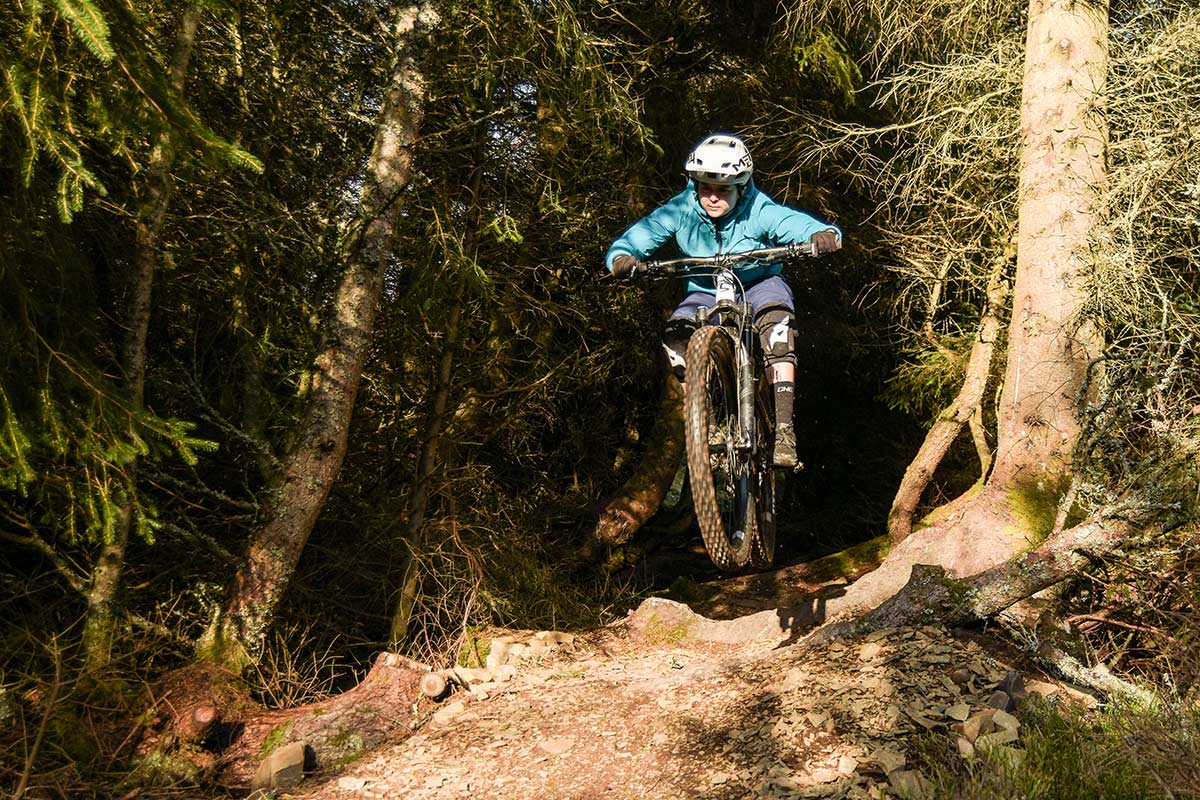
Unlike lots of enduro athletes, I haven’t switched from elite Downhill or XC. I’m new to a sport which is itself fairly new, in the grand scheme of things. One of my road cycling pals once said, “Wait, wasn’t your sport invented like last week?”. Not quite, but she does have a point.
I digress. Not only am I on the right training program, but if I miss a training session I’m letting more than just myself down; I feel like i’m letting my coach down too. After all, he’s put time and effort into creating a master plan. I want to follow it to the letter.
I keep in contact with my coach on a daily basis, to let him know how each session went and how I’m feeling. This is one of the most useful aspects. It means that if I’m feeling a little under the weather, or if I’m having a problem with any aspect of the program, my coach can adjust the training as necessary.

This has been particularly useful over the last weeks/months with the COVID-19 situation, changing sessions up to keep things interesting so I don’t lose my head entirely. If I’m feeling really terrible, he can just say “Don’t do tomorrow’s session”, taking away the decision making and guilt I may have had.
My EWS Training Program
Shot and edited by Arron Barnes of Albashots Media
Enduro has often be called “the ultimate test of mountain biking”, because it challenges the rider’s cardiovascular fitness and ability to get down hills quickly. I wouldn’t necessarily call it a mixture of XC and Downhill. After all, the uphill transition times between stages don’t contribute to your race time. You do however have to complete them within a specified time; if you don’t, you get smacked with a rank (and soul) crushing time penalty.
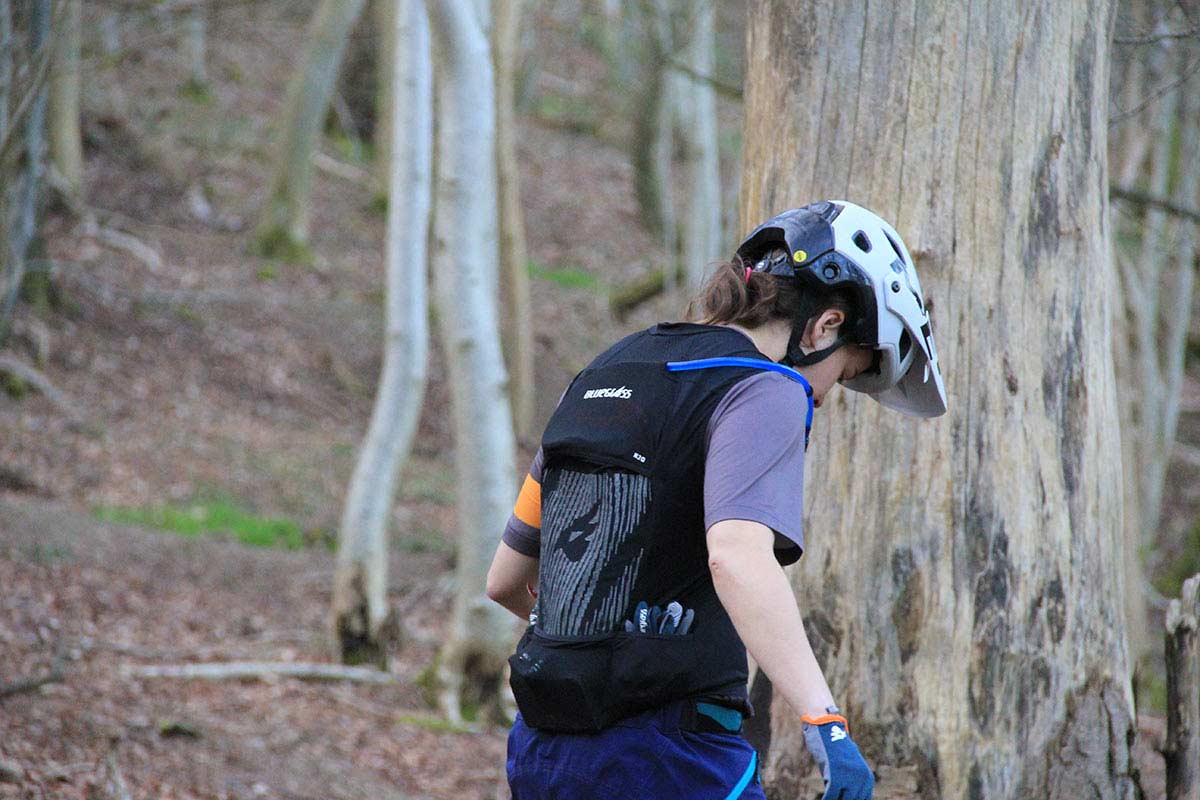
Also, the descents are often much longer than you’d see in a DH race. Ten to fifteen minute stages aren’t out of the ordinary. You’ll even come across the odd 25 minute stage at certain EWS rounds.
They often include short sharp uphill sections just to keep you on your toes. And those mean all-out sprints when you’re already mentally pinned.

As, you might imagine, you need the full complement of physical fitness attributes; endurance, explosive power, a solid core, strength, good mobility, a good set of lungs on you and some skills wouldn’t go a miss either. This is what I’m training for.
Before I embarked on this journey, I was riding two to three times a week with my pals, purely for fun. Just like your average weekend warrior. When I told my coach this, his response was, “Oh, we really are starting from zero then”.
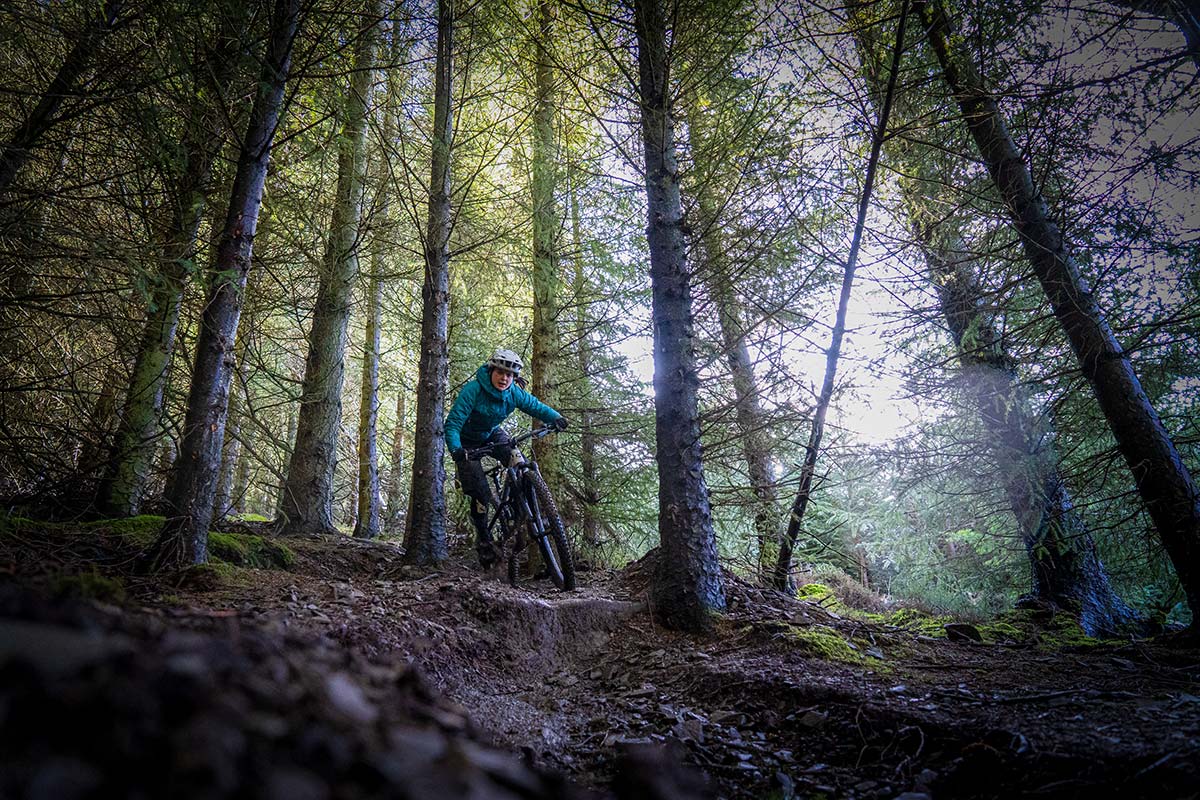
Hence, I wasn’t thrown straight into the gym, lifting weights, hitting hill sprints or sitting in the saddle for 6 hours. It would have floored me physically and mentally. Instead, I was eased in gently, sent out to ride trails for 2-3 hours a day, six days a week. That was definitely a big enough change to be getting on with.
Getting used to a structured program took time. Some aspects of training are very boring. When the day’s training was a 12 mile pedal along a flat cycle path, and all my pals were heading out to shred steep exciting trails I got serious FOMO.
Consistency, meet Specificity
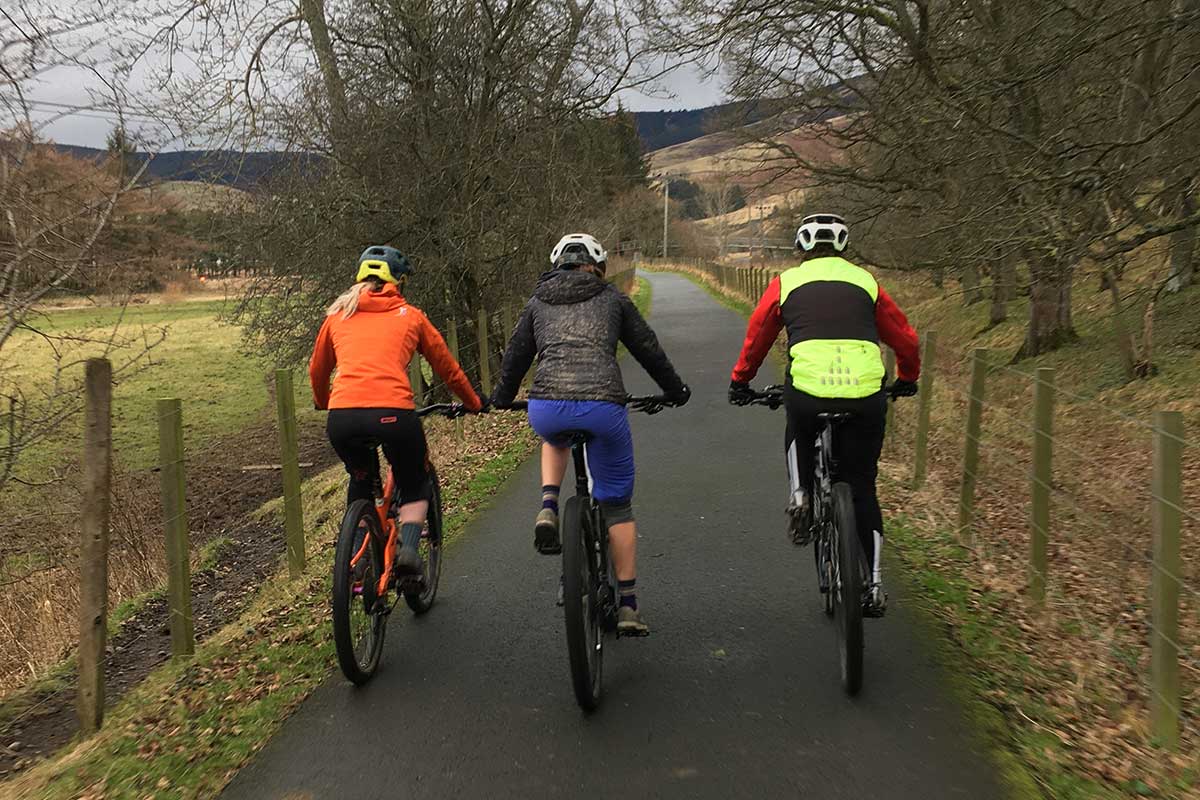
I found myself asking my coach if I could swap sessions to better suit my social life. But by asking for changes I was totally missing the point. Each session is scheduled in for a specific reason, and I had to learn to respect that and not fight my coach. Training is a long term process and there are no quick fixes. Consistency is key.
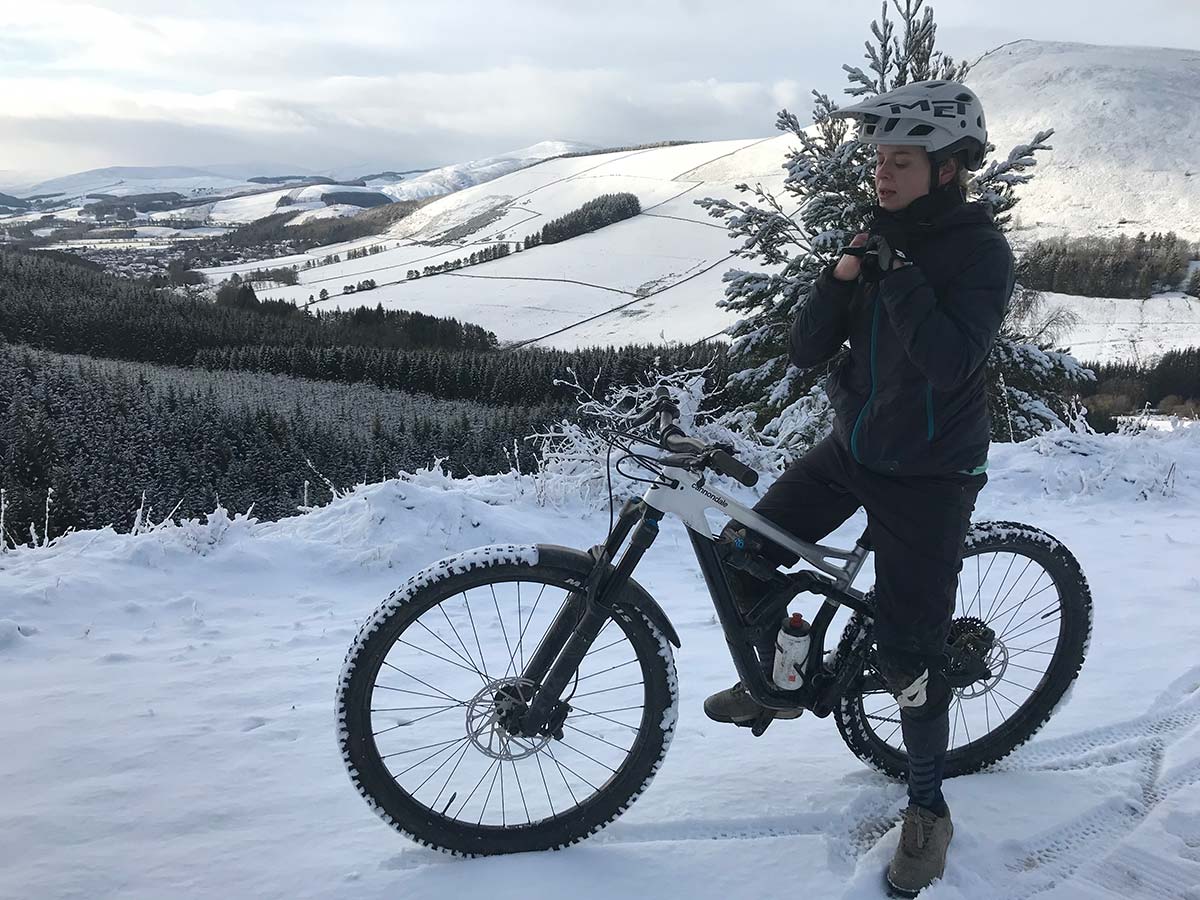
It was at least eight weeks before “training became training”, not just riding. Once I’d developed a bit of resilience, base fitness and a habit of riding every day in deepest winter, it was time to bring in sessions that would challenge specific aspects of my physiology.
I won’t be publishing my entire EWS training program, as I’m not really in the business of divulging trade secrets, but I can give you a good idea of what’s going on. My enduro training program now comprises two high intensity sessions a week. These are the key sessions, and by far the most savage.

SESSION #1 – HILL REPEATS:
The first is a hill rep session; pedal up a section of hill as hard as you can without riding yourself off the bike, roll back down and repeat. The length of the section increases with each rep, then it decreases back down to the first short rep, sort of like Russian Steps.
This session will give you jelly legs, make you salivate to the point where you think you’re going to vomit, make your eyes water… you get the idea. You should be approaching your MAX HR. You get out what you put in.
SESSION #2 – FLAT REPEATS:
The second key high intensity session of my enduro training program is very similar but the reps are done on the flat(ish). Again, you’re approaching MAX HR; for me, that’s ~195 bpm. You’ll be wondering why on earth you set out on this ridiculous mission. It’s nothing but pain and struggle, and to top it all off there’s a bleeding head wind.
Around these key sessions are much easier ones. Gentle rides around the local paths, riding trails, sessioning different lines with friends, keeping it interesting.
…and then there’s the weight room
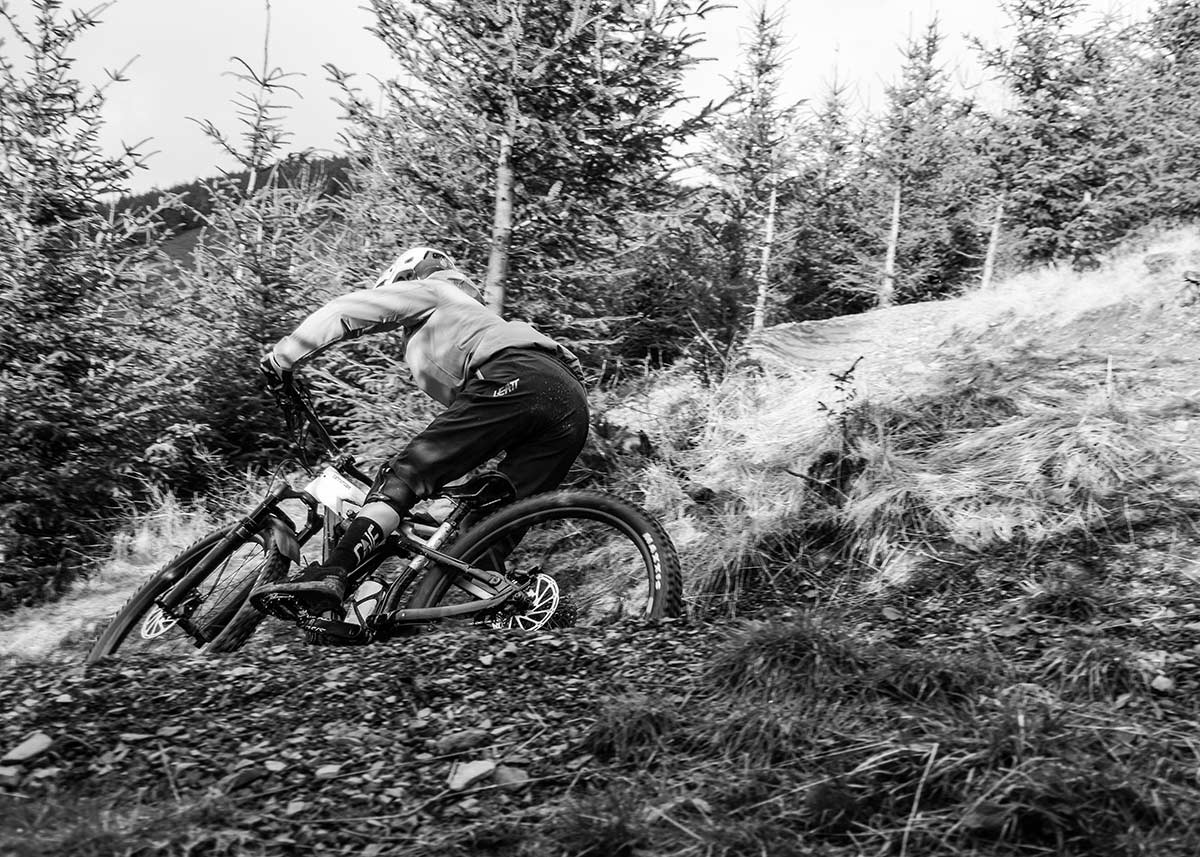
The third aspect of my training plan is conditioning. I’m definitely still in the early days of conditioning, so there isn’t anything too exciting to share on this front. To avoid causing more harm than good, my coach is steadily introducing me to plyometric workouts which involve explosive movements such as jumps and lunges.
Finally, I’m probably doing more push-ups each month than I had done in my entire life previous to starting this training plan.
Actually, I’ve counted them. Between January 1st and April 29th I did no fewer than 3,798 push-ups. That’s a weekly average of 223. These are a mixture of standard shoulder-width push-ups, really wide ones, and really narrow ones, the latter of which are by far the hardest.
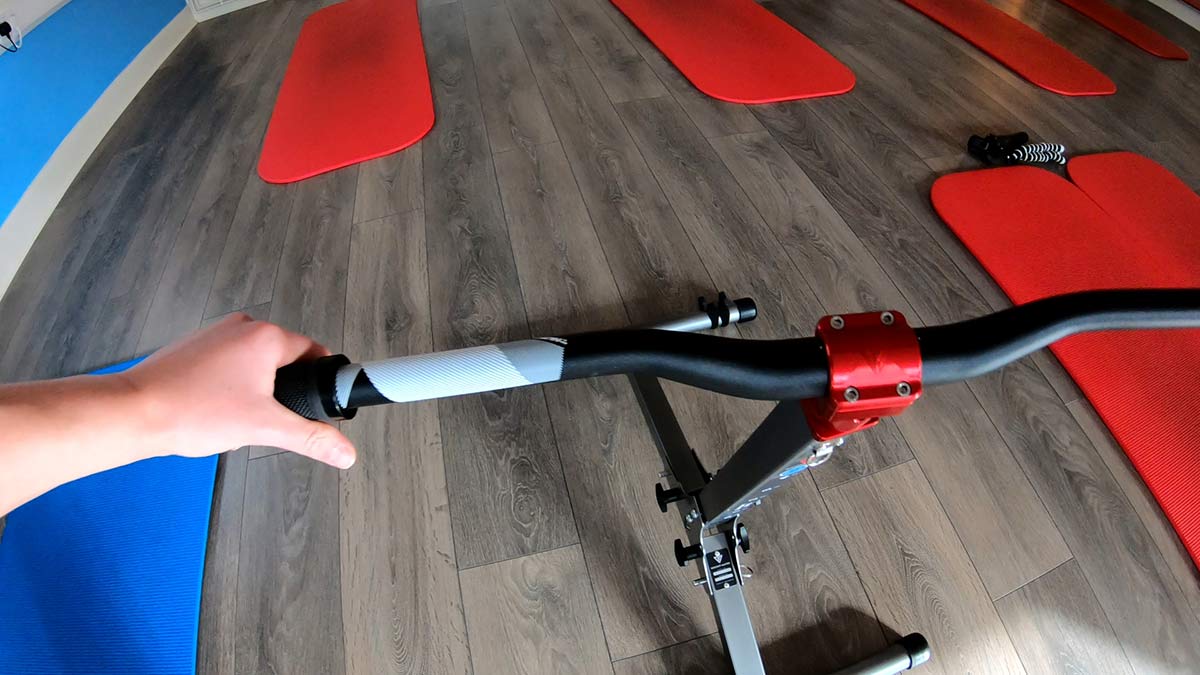 I’ve recently started using a body weight training tool specific to mountain biking called the Descent Master. It is essentially a handlebar mounted on a pivot, on which you can do push-ups. It adds a bit of instability to the push-up, partly simulating that dynamic feel you get from the front end while descending.
I’ve recently started using a body weight training tool specific to mountain biking called the Descent Master. It is essentially a handlebar mounted on a pivot, on which you can do push-ups. It adds a bit of instability to the push-up, partly simulating that dynamic feel you get from the front end while descending.
The push-up itself is easier than a standard one from the floor as you’re starting from a higher position and lifting a smaller weight. But, I’m having to engage my core a lot more to keep the bar flat. It’s a great piece of kit for enduro training that I’ll be using for a long time to come. There’s a lot more you can do with the Descent Master than traditional push-ups but my level of conditioning isn’t quite there yet.
The final key session of the week is rest day. Rest day is sacrosanct. It is to be respected. This is when your body is adapting to the stress you’ve put it under. Your muscles are repairing, your immune system is recovering, and you get to reset psychologically for the week ahead.
Enduro Training: What’s next?
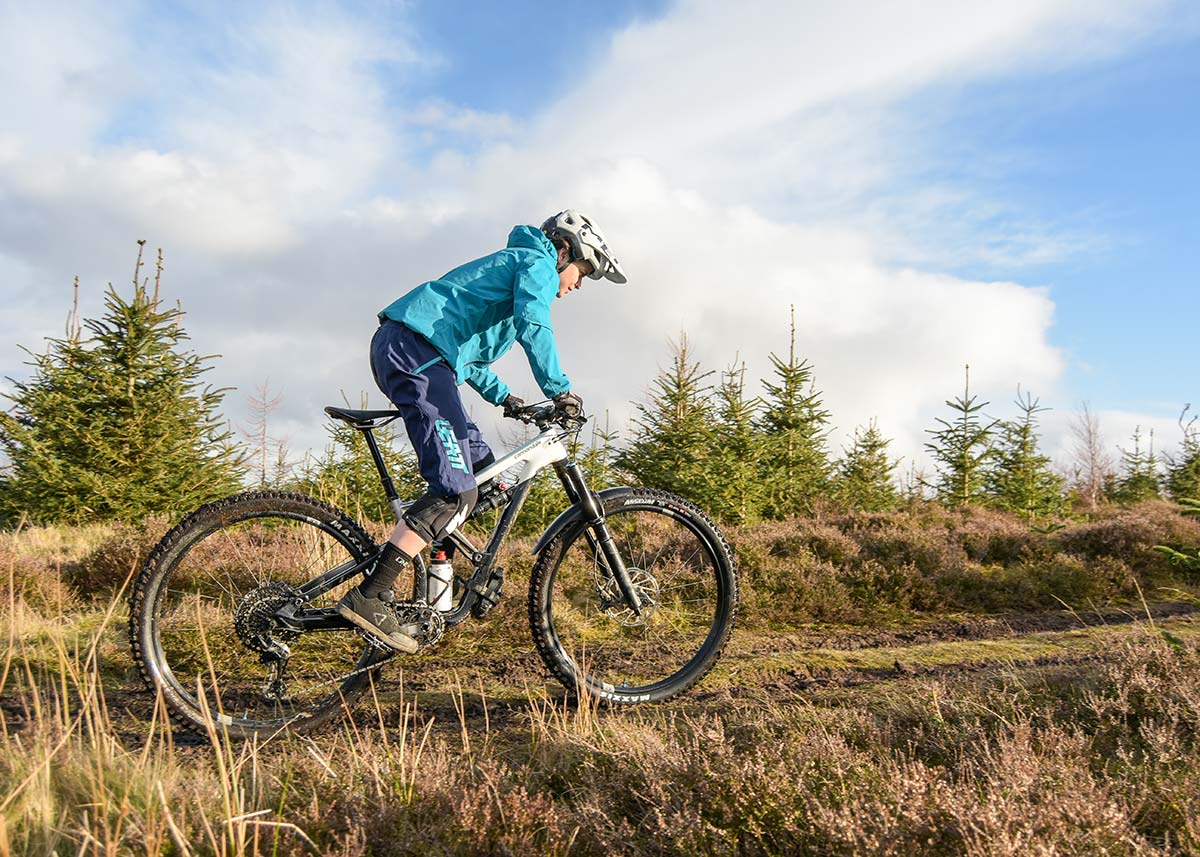
Unfortunately, it looks as though the race season is over before it’s even started. Like most of the World, in the UK we have been in lockdown due to the Coronavirus outbreak. All UK racing is cancelled for the foreseeable future.
Sadly, Round 4 of the EWS in Val di Fassa is cancelled. Round 5 in Austria-Slovenia is still on, rescheduled to October 3-4. And that’s my target, for now.
I hadn’t really banked on an EWS being my first race of the season! But that is what my season is shaping up to be, so I’m continuing with my EWS training program with renewed vigor. Straight in the deep end. Here’s hoping I can swim.
Join us next time on The Path to hear about the impact of my EWS training so far, and how it is is becoming more specific as we head towards race day. I’ll be heading North to find exposed, rocky, loose terrain more akin to what I might find in the race season ahead…
Thank you to Arron Barnes of Albashots Media for photography and filming, Professor Geraint Florida-James for supporting my EWS Training, and BSpoke Cycles for supporting me with bike mechanics. Thanks also to Cannondale, Adrenalin Uplift, Robyn Wilkinson, Craig Anderson, Fiona Berry, Louise Robinson, Brody Hood, Raymond Leinster, Dougie Thompson, Alex Holowko and the Enduro World Series for supporting this project.
This project is also supported by MET Helmets and Bluegrass Eagle Protection.
